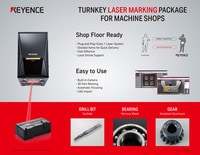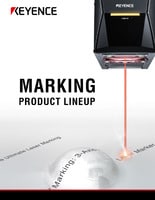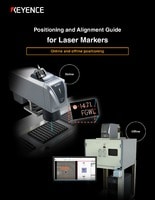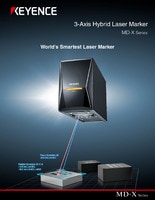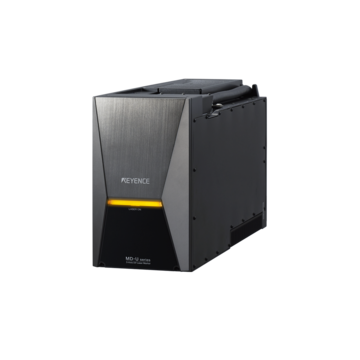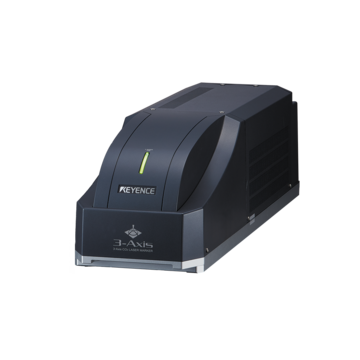Industrial Laser Marking Systems / Laser Markers
Rotary Laser Marking Machine
-
Tags:
- Laser Marking , Aerospace , Medical
Suitable for numerous industrial applications, a laser rotary allows for marking 360 degrees around a part. The manufacturing industry as a whole values efficiency, and this is a big focal point for this particular machine.
This article provides a comprehensive overview of rotary laser marking machines and the nuances of their use cases.
Introduction to Rotary Laser Marking
There are plenty of viable laser marking machines that can handle flat services, but round objects present their own set of challenges. If a laser does not have 3-axis technology, then rotary laser marking will be needed for marks across any curved surface. For the lasers with 3-axis, like the KEYENCE laser marking systems, a rotary will only be necessary if the marks exceed the lasers reach (typically around 120-160 degrees depending on the material).
In short, rotary technology is a fixture that can be programmed and attached to various types of laser marking machines. During the marking process, the technology rotates the part under the laser, leaving seamless and legible marks 360 degrees around the part. Of course, these marks are based on very detailed specifications to ensure uniformity between every part of the line. Although this process requires additional hardware and programming, rotary machines can be very efficient when set up correctly.
We’re here to provide you with more details.
Reach out today!

Advantages of Rotary Laser Marking
Laser marking rotary systems might offer a simple use case, but the technology has a surprising list of advantages. This is especially true when it comes to older marking methods, as newer machines are simply capable of better quality and throughput. Nevertheless, it is crucial for manufacturers to consider the true scope of the advantages before making an investment.
Some of the biggest advantages to rotary laser marking machines include:
- Marking potential on difficult surfaces
- Improved precision
- Consistent results
- Streamlined processes
- Compatible with numerous materials
- Non-contact and safe processing
In addition to these types of benefits, rotary technology can also help strengthen a manufacturer’s competitive edge. For example, it can help differentiate a manufacturer’s products in the marketplace by improving functionality and enhancing aesthetics. These are just some of the reasons why industry professionals choose rotary marking for a wide array of applications.
Discover more about this product.
Click here to book your demo.

Applications of Laser Rotary
Today, round parts are far more prevalent in manufacturing than you might realize. Because of this, there are a wide range of use cases for laser rotary systems. This is evident not just in broad manufacturing applications but also in its numerous subsectors.
Here are a few common industry applications for the marking technology:
- Medical devices
- Automotive
- Aerospace
- HVAC
- Personalized products
- Firearms
Not only does this make the technology viable for many manufacturers, but it also gives them flexibility to explore other markets. While a laser marking machine with rotary attachments can work well for many applications, unique considerations are involved. Regardless of your use cases, it is important to cover your bases before adding it to the production line.
We’re here to provide you with more details.
Reach out today!

Considerations for Selecting a Rotary Laser Marking Solution
Selecting a marking solution for your manufacturing processes can raise some questions. However, reviewing several key considerations can help alleviate some of those concerns and guide you toward the right technology. Regarding the laser component, there are many different types compatible with rotary attachments.
For example, a fiber laser marker offers a unique set of capabilities compared to a UV laser marker. They’re used for similar purposes while delivering features that are unique to their own.
Other important considerations include:
- What size of parts are you working with?
- Do you need one or multiple types of markings?
- Are automatic feed applications essential to your operations?
- Will you need the multifaceted capabilities of hybrid laser markers?
- Will markings vary or be uniform across every part?
All these questions, and more, play into figuring out if a laser rotary is necessary or which one is best for your operation. Those looking for a little more guidance are encouraged to work with those who have years of direct experience on the topic.
Curious about our pricing?
Click here to find out more.

Why Choose KEYENCE for Rotary Laser Marking?
There are many rotary laser marking technologies on the market, but few are backed by our years of experience at KEYENCE. More than equipped to educate you on everything related to laser marking, we can ensure you understand exactly what your needs are.
We’re also able to provide a broad selection, from CO2 laser markers to telecentric green laser markers and more. Our clients experience years of reliability from our machines, on top of the unwavering support from KEYENCE, which is on standby along the way.
If you’d like to learn more about a laser marking machine for round parts, come speak with us about what laser rotary equipment has to offer.
We’re here to provide you with more details.
Reach out today!


